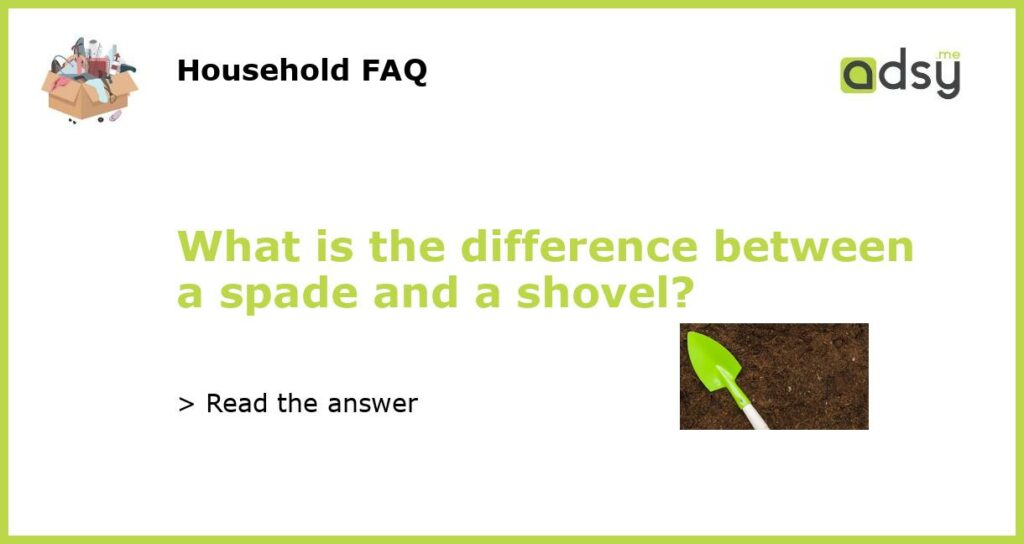Definitions of a Spade and a Shovel
A spade and a shovel are both tools used for digging, but there are subtle differences between the two. Let’s start with some definitions:
- A spade is a tool with a flat, rectangular blade and a long handle, typically made of wood or metal. It is primarily used for digging, cutting through tough roots, and moving soil.
- A shovel, on the other hand, has a curved blade and a shorter handle. It is designed for lifting and moving loose materials, such as dirt, sand, or gravel. Shovels are often used for landscaping, construction, and gardening tasks.
Now that we have a basic understanding of these tools, let’s delve deeper into the key differences between a spade and a shovel.
Blade Shape and Cutting Ability
One of the main differences between a spade and a shovel is the shape of their blades. A spade typically has a flat, rectangular blade, which allows for efficient cutting through tough soil and roots. This sharp cutting edge makes a spade ideal for digging deep holes or trenches.
On the other hand, a shovel has a curved blade that is more concave. The curved shape of the shovel blade is well-suited for scooping and lifting loose materials, such as dirt or gravel. However, it may not be as effective as a spade when it comes to cutting through hard surfaces or dense roots.
Handle Length and Design
Another notable difference between a spade and a shovel lies in their handles. A spade typically has a longer handle compared to a shovel. The longer handle of a spade provides more leverage and power, making it easier to dig deep holes or move heavy loads.
Shovels, on the other hand, have shorter handles that are designed for quick and efficient movements. The shorter handle allows for more control and maneuverability, which is beneficial when working in tight spaces or when precision is required.
Application and Use Cases
Both spades and shovels have their own specific applications and use cases. Here are some examples:
- Spades are often used for digging and cutting through tough surfaces, such as hard-packed soil, compacted gravel, or dense roots. They are commonly used in gardening, landscaping, and construction tasks that require more forceful digging.
- Shovels, on the other hand, are designed for lifting and moving loose materials. They are commonly used for tasks such as shoveling snow, spreading mulch or compost, and moving dirt, gravel, or sand.
While both tools can be used for digging or moving soil, their specific designs and features make them better suited for different tasks.
Summary: Choosing the Right Tool
When choosing between a spade and a shovel, it is important to consider the specific task at hand. Here are some factors to consider:
- If you need to dig deep holes, cut through tough roots, or work with hard-packed soil or gravel, a spade with its sharp cutting edge and long handle may be the better choice.
- For tasks that involve lifting and moving loose materials, such as shoveling snow, spreading mulch, or moving dirt, a shovel with its curved blade and shorter handle may be more practical.
Ultimately, the choice between a spade and a shovel depends on the nature of the work and personal preference. It is always a good idea to have both tools on hand, as they complement each other and can be used for a variety of tasks.






